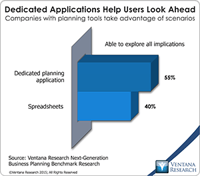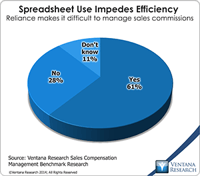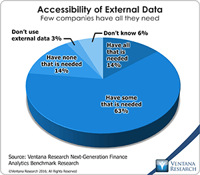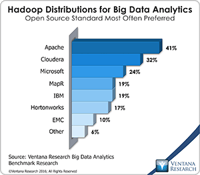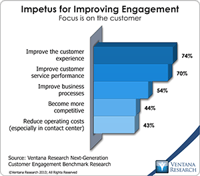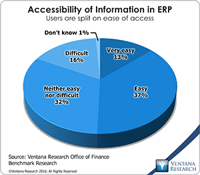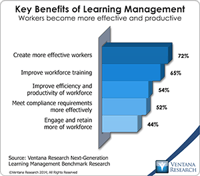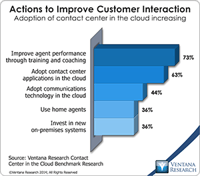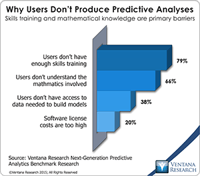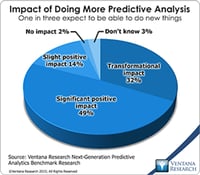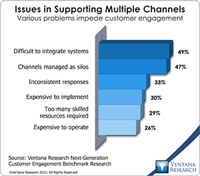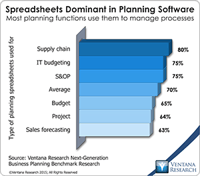I hope this title captures your attention; I’m trying to make a point about the chaos going on in managing and operating marketing. What marketing needs in 2016 is to manage and optimize its efforts in a more unified manner. This perspective kicks off a new series on the challenges for marketing to automate or execute tasks and manage toward maximum performance. We all know that the craft of marketing is in need of significant transformation, from the CMO throughout the entire marketing...
Read More
Topics:
Big Data,
Predictive Analytics,
Social Media,
Customer Performance,
Business Analytics,
Business Collaboration,
Business Intelligence,
Business Performance,
Cloud Computing,
Financial Performance,
Information Applications,
Operational Intelligence,
Uncategorized,
CMO,
Information Optimization,
Sales Performance Management (SPM)
For several years I have been advocating that sales organizations adapt their processes and applications to optimize both sales performance and the customer experience. For details see my research agenda for last year. However, it appears that not many sales organizations have responded to this challenge; many can barely maintain their quarterly sales forecasts and monthly pipeline, track progress toward quotas and ensure that sales commissions are processed promptly and paid accurately. A...
Read More
Topics:
Predictive Analytics,
Sales Performance,
Mobile Technology,
Customer Performance,
Operational Performance,
Business Analytics,
Business Collaboration,
Business Performance,
Cloud Computing,
Financial Performance,
Uncategorized,
Financial Performance Management (FPM),
Sales, SFA, SPM, Sales Performance Management, Sal
At the 2015 technology analyst summit in Austin, Texas, analytics and business intelligence software vendor Qlik discussed recent market and product developments and explained its roadmap and strategy for 2016. Discussion topics included its Qlik Analytics Platform and QlikView 12.0, Qlik Sense and Qlik DataMarket, applications built on the platform but also how it is expanding its analytics experience for business.
Read More
Topics:
Big Data,
Mobile Technology,
Business Analytics,
Business Intelligence,
Business Performance,
Governance, Risk & Compliance (GRC),
Information Management,
Operational Intelligence,
Uncategorized,
Information Optimization
I coined the term “cryptic data” to mean information that isn’t easy to find or access by people who could make use of it. In one instance, cryptic data offers professional investors – portfolio managers and securities analysts – a source of proprietary information that can improve their ability to pick stocks and achieve superior performance relative to their benchmarks. Automation through technology now makes collecting cryptic data substantially more efficient than manual methods and thus...
Read More
Topics:
Big Data,
Analytics,
Business Analytics,
Business Performance,
Financial Performance,
Uncategorized
On Monday, March 21, Informatica, a vendor of information management software, announced Big Data Management version 10.1. My colleague Mark Smith covered the introduction of v. 10.0 late last year, along with Informatica’s expansion from data integration to broader data management. Informatica’s Big Data Management 10.1 release offers new capabilities, including for the hot topic of self-service data preparation for Hadoop, which Informatica is calling Intelligent Data Lake. The term “data...
Read More
Topics:
Big Data,
Business Intelligence,
Information Applications,
Information Management,
Uncategorized
Verint is an established vendor of workforce optimization, advanced analytics and self-service products for customer experience management. Recently it announced its acquisition of Contact Solutions, whose products complement Verint’s. The acquisition adds analytics capabilities and fraud detection software, both of Verint will incorporate into its existing products. Contact Solutions also brings to the merger IVR and My:Time, two innovative products that add to Verint’s portfolio for customer...
Read More
Topics:
Mobile Technology,
Customer Performance,
Business Analytics,
Business Collaboration,
Cloud Computing,
Uncategorized,
Call Center
The evolutionary pace of technologies that shape the design of ERP systems has been accelerating over the last couple of years. In addition to cloud computing there is the increasing availability of analytics and reporting integrated into transaction processing systems, which I have noted; support for mobile users; in-context collaboration; and more intuitive user interface (UI) design. Each of these features enhances productivity and the usefulness of ERP software in managing a business. The...
Read More
Topics:
Human Capital Management,
Mobile Technology,
Customer Performance,
Business Collaboration,
Business Performance,
Financial Performance,
Uncategorized
Businesses and their human resource organizations feel pressure to maximize the value of their human capital in today’s intensely competitive world. Many have made or considered investments in new applications that better exploit information to efficiently recruit, engage and retain the best talent. Advanced applications not only advance these processes but also help management assess the performance of the workforce and compensate individuals fairly so that they advance their careers and find...
Read More
Topics:
Big Data,
Predictive Analytics,
Governance,
HCM, HR, HRMS, Workforce Management, Learning Mana,
Human Capital,
Mobile Technology,
Wearable Computing,
Customer Performance,
Business Analytics,
Business Collaboration,
Business Performance,
Cloud Computing,
Financial Performance,
Governance, Risk & Compliance (GRC),
Information Management,
Uncategorized,
Financial Performance Management (FPM)
Six months ago I wrote that Interactive Intelligence bases its product strategy on continued support of its three core products: CIC, CaaS and PureCloud. During a recent briefing CMO Jeff Platón made it clear that although the company continues to support all three, its main focus will be PureCloud Engage that is also certified and available on the Salesforce AppExchange. When the company first released this product in 2012, the financial markets and some analysts saw it as a big risk because...
Read More
Topics:
Customer Performance,
Cloud Computing,
Uncategorized,
Call Center
I recently attended the SAS Analyst Summit in Steamboat Springs, Colo. (Twitter Hashtag #SASSB) The event offers an occasion for the company to discuss its direction and to assess its strengths and potential weaknesses. SAS is privately held, so customers and prospects cannot subject its performance to the same level of scrutiny as public companies, and thus events like this one provide a valuable source of additional information.
Read More
Topics:
Big Data,
Predictive Analytics,
Business Analytics,
Business Collaboration,
Business Intelligence,
Business Performance,
Information Applications,
Information Management,
Uncategorized
Technology innovation is accelerating faster than companies can keep up with. Many feel pressure to adopt new strategies that technology makes possible and find the resources required for necessary investments. In 2015 our research and analysis revealed many organizations upgrading key business applications to operate in the cloud and some enabling access to information for employees through mobile devices. Despite these steps, we find significant levels of digital disruption impacting every...
Read More
Topics:
Big Data,
Predictive Analytics,
Sales Performance,
Supply Chain Performance,
Governance,
Mobile Technology,
Operational Performance Management (OPM),
Customer Performance,
Operational Performance,
Analytics,
Business Analytics,
Business Collaboration,
Business Intelligence,
Business Performance,
Cloud Computing,
Financial Performance,
Governance, Risk & Compliance (GRC),
Information Applications,
Information Management,
Location Intelligence,
Operational Intelligence,
Uncategorized,
Workforce Performance,
Business Performance Management (BPM),
Financial Performance Management (FPM),
Information Optimization,
Sales Performance Management (SPM)
During a recent analyst briefing, I learned that Genesys finished 2015 with a bang and enters 2016 with high expectations. Last year it made several changes at the top of the organization, naming a new president, Tom Eggemeier; a new chief marketing officer, Merijn te Booij; and a new head of global sales and field operations, Mark Turner. Their mandate is to stimulate sales of the company’s core product, Customer Experience Platform. I also learned that since spinning out of Alcatel Lucent in...
Read More
Topics:
Customer Experience,
Customer Performance,
Cloud Computing,
Uncategorized,
Call Center
Financial planning and analysis (FP&A) is one of the core functions of any finance department. Preparing a budget, measuring performance to financial objectives and forecasting the company’s financial position are three of the main tasks for the FP&A organization within Finance. A key challenge for today’s FP&A organization is increasing the business value and relevance of budgeting and planning. To do so, FP&A must transform the processes from a static, rear-view mirror approach to a...
Read More
Topics:
Analytics,
Business Performance,
Financial Performance,
Uncategorized
